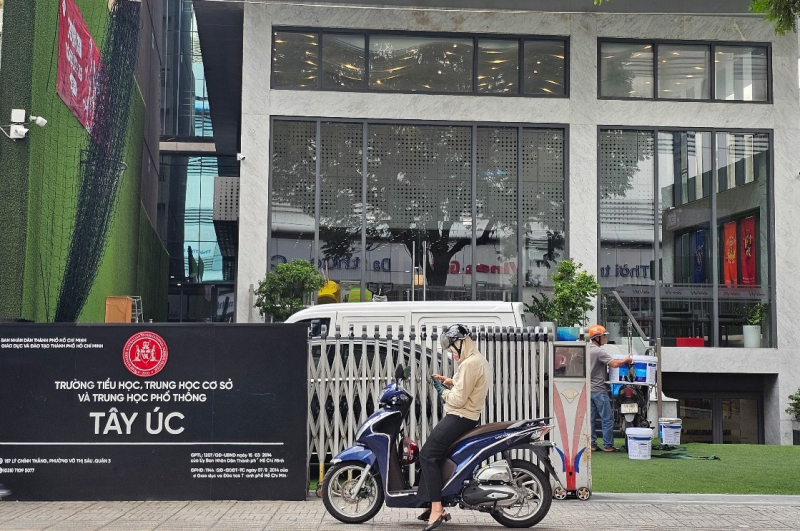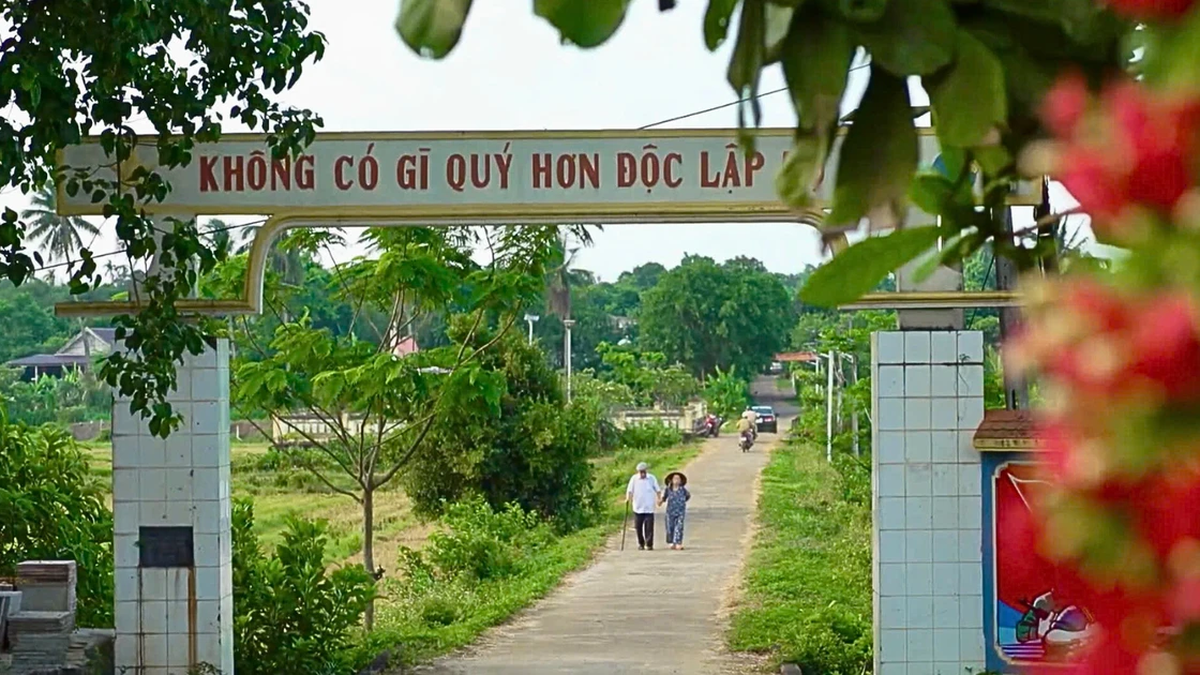With the above student population, Binh Duong and Ba Ria - Vung Tau areas still have a lot of land, so the shortage of schools is less severe. However, for wards and communes in the old Ho Chi Minh City area, finding a place to study in a public high school a few kilometers away from home is not a simple problem for many parents...

While the number of 9th graders remains high every year, due to overloaded public school facilities, in the 2024-2025 school year, the Department of Education and Training was only able to enroll 71,020 students in 10th grade at 113 public schools in Ho Chi Minh City (old), a decrease of 6,274 compared to the previous school year. In the 2025-2026 school year, although in the old Ho Chi Minh City area alone, the number of 9th graders was up to 88,772, 115 public high schools were only assigned to enroll 70,070 students.
Although the opportunity for junior high school graduates to enter public high schools increased by 14% compared to the previous school year, only 79% of ninth graders were able to enter public high schools. Thus, for the remaining 21% of ninth graders, if parents do not want their children to attend continuing education centers or attend colleges or vocational schools, the only way is to "bite the bullet" and pay tuition to enter private high schools.
Before Mr. Nguyen Van Hieu, Director of the Department of Education and Training of Ho Chi Minh City, issued a decision to assign enrollment quotas for grade 10 in the 2025-2026 school year to 64 high schools and multi-level general schools of the private type in Ho Chi Minh City (old) on May 28, on May 12, Mr. Ho Tan Minh, Chief of Office of the Department of Education and Training, signed an invitation to attend a meeting to review the student population for the 2025-2026 school year and the following years of non-public high schools and multi-level general schools. Attached to this invitation is a list of 36 schools invited to the Department of Education and Training to work in groups and at different time frames.
Thus, before "finalizing" the list of schools and the number of students allowed to enroll, the Department of Education and Training inspected and surveyed the facilities and conditions of the schools to determine the training quota. However, on June 16, Mr. Nguyen Bao Quoc, Deputy Director of the Department of Education and Training, signed a document on the establishment of the 10th grade Admission Council for the new school year in the first phase, the list only had 43 schools left.
To continue reviewing and allowing private schools to enroll in grade 10, on June 3, Mr. Duong Tri Dung, Deputy Director of the Department of Education and Training, continued to sign a document to send to 15 private schools requesting them to review and report on the conditions of facilities, re-propose enrollment targets for the 2025-2026 school year to ensure the floor area standards for each student according to regulations; supplement legal documents proving land use rights, facility lease contracts, fire prevention inspection records, etc. Thus, even the opportunity to find a place to study at a private school that is not too far from where you live and has a tuition fee that is suitable for your ability is not easy for many parents whose children cannot enter grade 10 of a public school.
The number of 18,700 9th graders who cannot enter 10th grade in public schools in the next school year seems to have created a great opportunity for private schools, but on the contrary, Mr. Huynh Kim Tuan, Principal of Tran Cao Van Secondary and High School system - a school with mass tuition fees and a high school graduation rate of 70% passing the entrance exam to public universities, said: This year, enrollment is very difficult.
Up to this point, the school has only recruited about 750 grade 10 students, less than half of the assigned target. So, what is the reason for this situation? Is it because many parents have considered sending their children to colleges and vocational schools, or is it because of unfair competition between private schools? The Department of Education and Training and each ward and commune need to understand this issue clearly to know where the number of grade 9 students in the old Ho Chi Minh City area who do not have enough points to enter public grade 10 will study in the upcoming school year.
After days of anxiety over his son’s graduation exam results, Mr. Pham The Duy, a parent in the city center, happily said that his son passed his first choice according to the scores recently announced by the Department of Education and Training. However, when commenting on the number of public 10th graders admitted each year, which is always tens of thousands lower than the number of students taking the junior high school graduation exam, this parent’s voice suddenly dropped.
“Except for a few families who can afford to send their children to international schools with very high tuition fees, most parents like me want their children to continue studying at public schools until the end of high school before going to vocational school or university because their children are still young. Moreover, knowledge at high school level is compulsory and is the luggage for children to grow up later. However, every year the city “eliminates” more than ten thousand ninth graders, families who can afford it will be forced to send their children to private schools with high tuition fees; those in difficult cases will have no choice but to send their children to vocational schools or to supplementary high school education at continuing education centers. At that time, the compulsory knowledge that children must learn at high school level will not be comprehensive,” Mr. Duy confided.
While the old Go Vap area has up to 4 public high schools, the second choice for students entering grade 10 in the 2024-2025 school year has been "pushed" by the city's Department of Education and Training to a high school at the end of Phu Nhuan district (old). The house is at the end of the Go Vap area, so every day, Ms. M. and her husband have to take turns waking up early in the morning or finishing work early in the afternoon to take their children to school, a journey of more than ten kilometers from home to school. In the upcoming school year, Ms. M. and her husband decided to save money to buy a small electric motorbike for their child to go to school by himself, although they are not comfortable letting their child ride alone due to the current crowded roads and constant traffic jams.
Looking back on a year of traveling to and from school, Ms. M suggested that the Department of Education and Training should review the route allocation for high school students, ensuring that the distance to school for the children is within a radius of a few kilometers so that both parents and students will have less hardship. After merging 3 provinces and cities, this school year the Department of Education and Training of the city needs to re-allocate routes for students who have just graduated from junior high school and entered public high schools. "Students entering grade 10 in the Go Vap area, District 12 (old) will go to Thuan An area of Binh Duong to study, which will be closer and less difficult to travel to than going to schools in the central area of Ho Chi Minh City to study," Ms. M. expressed her opinion.
We sent a series of contents revolving around the above issues to Mr. Nguyen Van Hieu, Director of the City Department of Education and Training. Mr. Hieu said that he had forwarded them to his subordinates to prepare a response, but so far we have not received any feedback.
Ho Chi Minh City's temporary regulations on universal secondary education standards in the area for the period 2023-2030: Youth and adolescents recognized as meeting universal secondary education standards must have a high school diploma or intermediate diploma before turning 21 years old. Wards and communes recognized as meeting universal secondary education standards must mobilize 95% of junior high school graduates to study the universal high school program (90% for suburban areas); have a rate of people aged 18-21 with a universal secondary school graduation certificate of 80% or more (70% for suburban areas).
Source: https://cand.com.vn/giao-duc/hon-chuc-nghin-hoc-sinh-lop-9-kho-vao-truong-cong-moi-nam-bai-2--i775907/



































































































Comment (0)